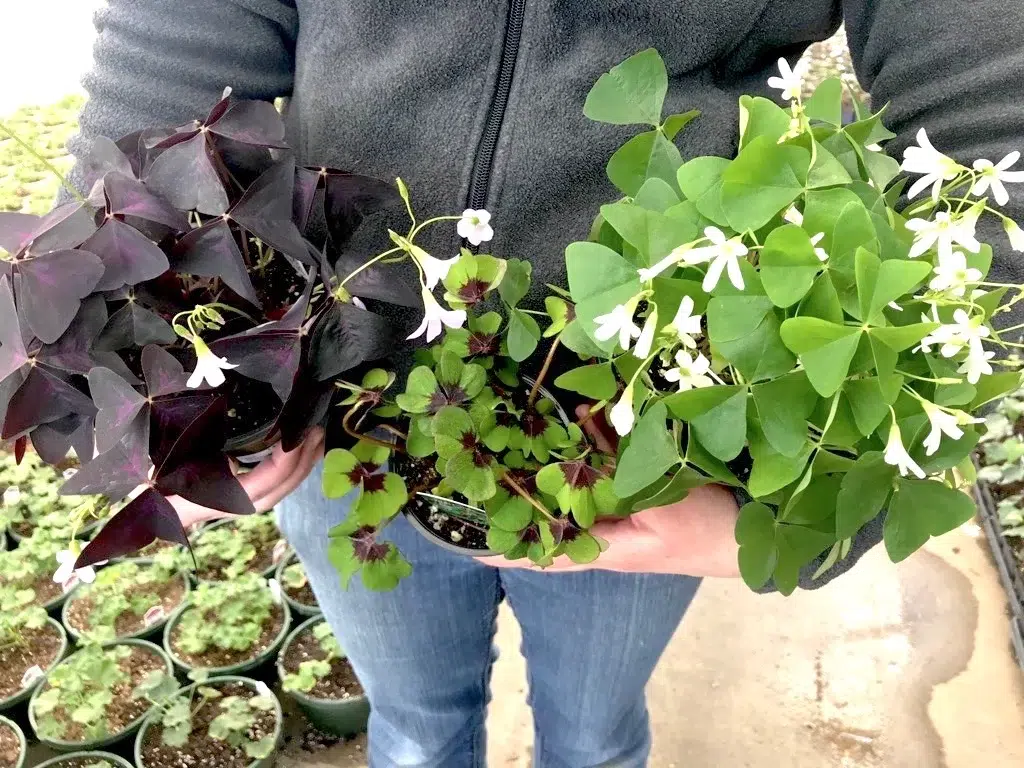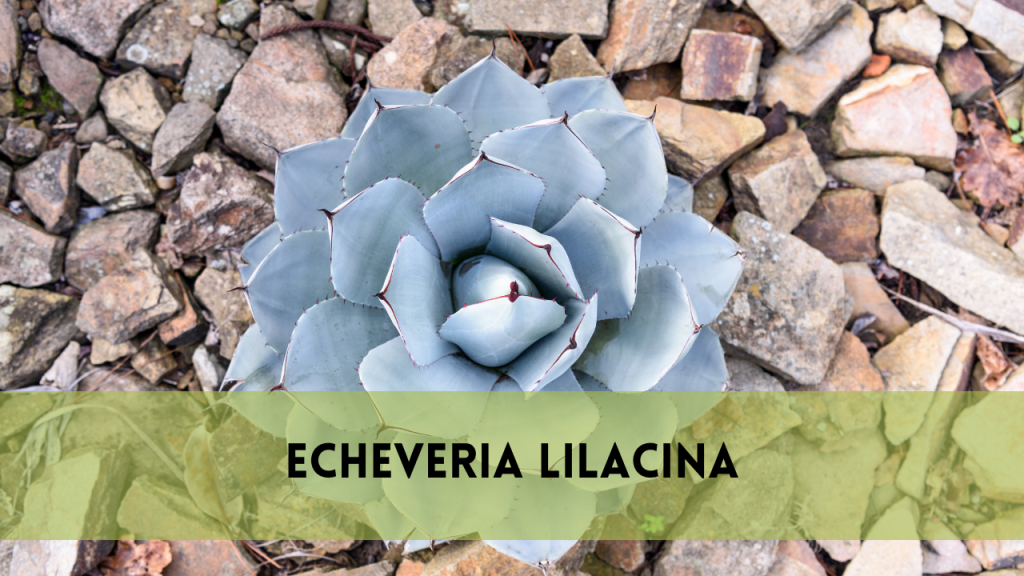Shamrock plants, scientifically known as Oxalis spp., are small perennial herbs that belong to the Oxalidaceae family. They are characterised by their trifoliate leaves, which are often mistaken for clover leaves due to their similar appearance. Shamrocks are popular ornamental plants known for their attractive foliage and sometimes colourful flowers. They are native to various regions worldwide, including South America, Africa, Europe, and Asia.
Types and characteristics.
Varieties: There are numerous popular types of shamrock plants:
Oxalis triangularis: Also known as the Purple Shamrock, it has purple-coloured leaves with triangular leaflets.
Oxalis deppei: Also known as the Lucky Clover, this plant has green leaves and frequently produces white or pink blooms.
Oxalis regnellii, sometimes known as the Shamrock plant, has green or purple foliage and produces white or pink flowers.
Shamrock plants usually grow low to the ground, creating clumps of fragile foliage. The leaves are generally separated into three leaflets (trifoliate) resembling a clover. Depending on the cultivar, the leaves can range from green to purple. Some species have miniature flowers in various hues, contributing to their visual value.
Seasonal Variations: Shamrock plants may have seasonal growth patterns. Depending on the species and environmental conditions, they frequently thrive in the spring and fall, with slower growth or dormancy during hot summers or cold winters.
Growing Conditions for Shamrock Plants

Light
Shamrock plants prefer bright, indirect light. They flourish in areas with filtered sunlight and some shade. Direct sunlight, particularly during the hottest hours of the day, can damage their delicate leaves. Indoors, arrange shamrock plants near east—or west-facing windows so they receive indirect sunshine throughout the day. If planted outdoors, select a position with morning sun and afternoon shade or dappled light beneath trees or shrubs.
Temperature and humidity
Shamrock plants enjoy mild temperatures of 60°F to 75°F (15°C to 24°C). They are vulnerable to severe temperatures. Avoid placing them near drafts, air vents, or heaters, as these might create temperature swings.
Humidity
Shamrock plants thrive with moderate moisture. They can withstand typical indoor humidity but benefit from occasional watering to boost humidity, especially in dry indoor conditions. Avoid placing them in regions with extremely low humidity, such as near heating or air conditioning systems.
Soil requirements
Use a potting mix designed for houseplants or succulents. An excellent blend should include peat moss, perlite, or sand to promote proper drainage. This prevents soggy soil, which can cause root rot.
Shamrock plants prefer slightly acidic to neutral soil (pH 6.0-7.0). To adjust soil pH, add additives like peat moss or acidic fertilisers.
Watering Needs
Watering Schedule: Water shamrock plants generously when the soil’s top inch (2.5 cm) is dry. Avoid allowing the soil to dry entirely or get saturated. They generally need more water during their active growing season (spring and fall) and less during dormancy (summer and winter).
Watering Technique: Water directly into the soil around the plant’s base, avoiding overwatering the foliage. Empty any extra water from saucers or trays to prevent waterlogging.
Understanding and properly maintaining these growing conditions will guarantee that your shamrock plants thrive and remain healthy throughout the year, whether indoors or outdoors. Adjustments may be required according to local climate conditions and seasonal variations to give the best possible care for these attractive plants.
How to propagate shamrock plant
1. Division
Division entails dividing a mature clump of shamrock plants into smaller pieces, each with roots and stems.
Divide the plant in early spring or late summer when it grows actively.
Carefully remove the entire plant from the container or garden bed.
Gently separate the clump into smaller portions, ensuring each division has healthy roots and branches.
Plant each division in its own pot or garden site with well-drained soil.
Water thoroughly after planting and provide frequent care to encourage new growth.
2. Bulb/Corm Division
Some shamrock species, such as Oxalis deppei, develop bulbs or corms that can be divided and propagated.
Divide bulbs or corms throughout the dormant season or in early spring.
Carefully remove the bulbs or corms from the soil.
Gently separate the different bulbs or corms, giving each division a viable bud or growing point.
Plant the bulbs or corms in well-drained soil and space them according to their growth requirements.
Water lightly after planting and give proper care to promote new shoots and root development.
3. Seed Propagation
Although less common, shamrock plants can be grown from seeds.
Start seeds indoors in early spring for outdoor planting after the final frost, or sow them right outside in spring.
Sow seeds in a seed-starting container containing a well-drained potting mix.
Lightly press the seeds into the earth, then cover them with a thin layer of dirt.
Keep the soil wet but not saturated.
Place the tray in a warm spot with indirect light until the seeds germinate, usually taking 2-4 weeks.
Once seedlings have established genuine leaves, transplant them into individual pots or gardens.
Tips for Successful Propagation
Root Development: Make sure that each propagated division or bulb/corm has enough roots to sustain fresh development.
Care After Planting: Provide constant moisture and adequate lighting conditions to support establishment and growth.
Environmental Considerations: Adjust propagation methods and timing to reflect local climate conditions and the specific demands of the shamrock species being cultivated.
By selecting a suitable propagation method and following these rules, you can reproduce shamrock plants to extend your garden or share with others. Each method has its advantages, based on the plant’s growth stage and your gardening aims.
Care and Maintenance of Shamrock Plants
1. Watering frequency:
Thoroughly water shamrock plants if the soil’s top inch (2.5 cm) feels dry. They may demand more frequent watering during busy growth seasons (spring and fall). Reduce watering throughout the dormant season (summer and winter), allowing the soil to dry somewhat between waterings.
Watering Technique: Water directly into the soil around the plant’s base, taking care not to overwet the foliage. Remove excess water from saucers or trays to avoid waterlogging, which can cause root rot.
2. Light and Temperature
Shamrock plants prefer bright, indirect light. Place them indoors near east or west-facing windows to provide enough light without direct sunshine, which can scorch their leaves.
Maintain moderate temperatures of 60°F to 75°F (15°C to 24°C). Avoid placing shamrock plants near drafts, heaters, or air conditioners since these can produce temperature changes and stress on the plants.
3. Humidity
Shamrock plants prefer mild humidity. While they can handle moderate indoor humidity, spraying with water sometimes might raise humidity levels, particularly in dry indoor situations. Avoid putting them in places with extremely low humidity, such as near heating units.
4. Fertilization
Dilute a balanced, water-soluble fertiliser to half-strength. Fertilise shamrock plants once a month during the active growing season (spring and fall) to promote healthy development and bloom.
Apply fertiliser directly to damp soil, following the manufacturer’s instructions. Reduce fertilising during dormancy (summer and winter), when growth slows.
5. Prune and Deadhead
Pruning: Remove any leggy or damaged leaves to maintain plant shape and encourage new growth. Use sharp scissors or pruning shears to make clean cuts that do not harm healthy tissue.
Remove spent blooms regularly to ensure ongoing blooming and prevent the plant from focusing its energy on seed formation.
6. Pest and disease control monitoring.
Regularly check shamrock plants for pests, including aphids, spider mites, and mealybugs. Examine the undersides of leaves and along stems, where pests like to hide.
If pests are discovered, treat infestations immediately with insecticidal soap, neem oil, or other appropriate pesticides, following product recommendations. To prevent fungal diseases, keep plants well-ventilated and avoid overcrowding.
7. Seasonal Care
Increase watering and fertilising during active growing seasons to promote healthy growth and flowering.
When growth slows, watering and fertiliser are reduced during dormancy. Provide appropriate lighting and moderate temperatures to keep plants healthy.
8. Repotting
Shamrock plants should be repotted every 1-2 years, ideally in April, before the active growing season.
Choose a larger container with drainage holes and fill it with fresh, well-drained potting soil. Carefully remove the plant from its container, gently tease the roots, and set it in the new pot. Fill the dirt around the roots, water thoroughly, and continue with regular care.
Applications and Advantages
Indoor and Outdoor Applications: Shamrock plants can be grown in indoor containers and outdoor garden beds in warm regions. They enhance the colour and texture of gardens, borders, and rockeries.
Decorative Applications: Because of their appealing foliage and occasional blossoms, they are popular decorative houseplants. They work well in hanging baskets, terrariums, and mixed plant arrangements.
Cultural Significance: Shamrocks are important cultural symbols in many countries, symbolizing luck and good fortune, especially around St. Patrick’s Day.
FAQS
Are Shamrock Plants Toxic for Pets?
Shamrock plants, particularly some species of Oxalis, contain oxalic acid molecules, which can be somewhat hazardous to pets if consumed in sufficient quantities. Symptoms may include drooling, vomiting, and stomach pain. If you have curious animals in your home, keep shamrock plants out of their reach or choose pet-safe substitutes.
What are some common pests and diseases that affect shamrock plants?
Shamrock plants are generally resilient but may face pest and disease challenges.
Pests: Aphids, spider mites, and mealybugs can infest foliage and stems. Insecticidal soap or neem oil should be used to treat infestations right away.
Diseases: Overwatering can cause root rot and fungal diseases. Maintain sufficient drainage and avoid soggy soil. Good air circulation around plants helps to prevent fungal infections.
How Should I Prune My Shamrock Plants?
Pruning shamrock plants maintains their form and promotes healthy development.
Deadheading is the process of regularly removing spent flowers to encourage ongoing flowering and avoid seed formation.
Trimming: Remove leggy or damaged foliage using clean, sharp scissors or pruning shears. Cut just above a leaf node to promote new growth.
Shape Maintenance: Pinch back tips on sometimes to stimulate bushier growth and keep the plant from spreading too much.
Conclusion
Finally, shamrock plants, which belong to the Oxalis genus, make lovely accents in any yard or indoor environment. Shamrocks, known for their characteristic trifoliate leaves and occasional fragile blooms, are visually appealing and culturally significant. Gardeners may guarantee that these plants survive all year by recognising their unique care requirements, which include proper hydration, sun exposure, and occasional trimming. Shamrock plants add greenery and elegance to various settings, whether grown indoors as houseplants or outdoors in suitable regions.



